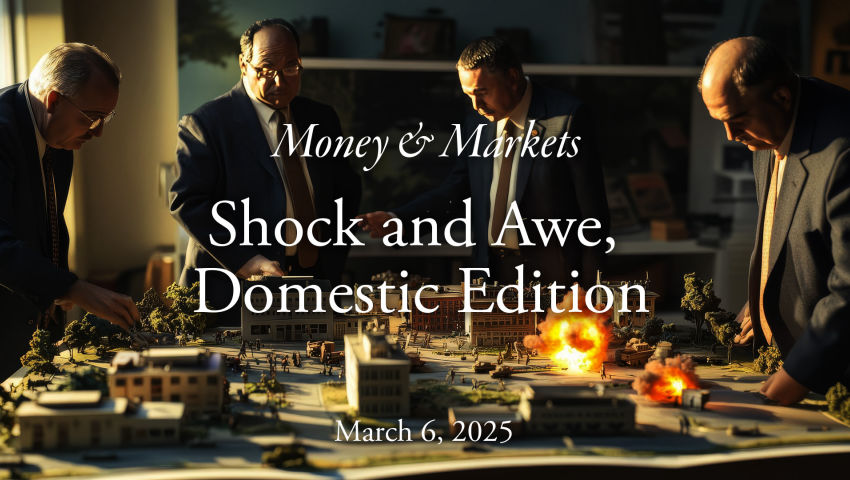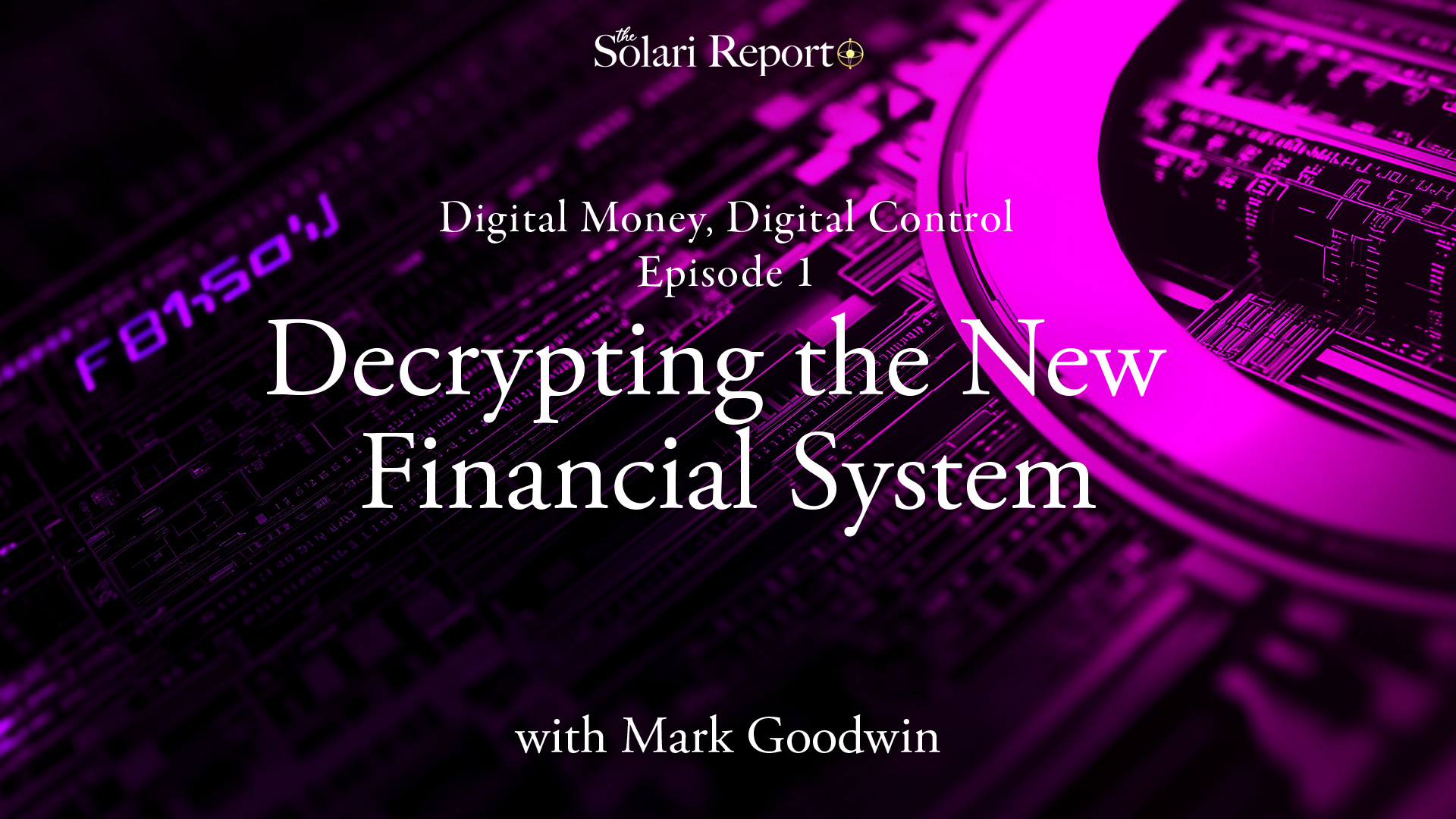Independent Media Sustainability: A Review of Existing Media Capital Structures
By Carolyn Betts, MBA/JD

A client of mine asked me to identify what capital structures might best suit an independent media company seeking to raise capital for infrastructure improvements and to expand its operations without the loss of editorial control that might accompany the sale of an equity interest in the company. As is the case for most young companies financed primarily with management sweat equity, retained earnings and loans and capital contributions by close friends, family and founders, the percentage interest that would need to be sold to raise adequate capital could result in a dilution of voting control by management.

In the case of an independent media company, the need for management independence is considerably greater because, in addition to the factors listed above, there is the potential for editorial interference by holders of significant voting power through their share ownership.2 Witness the repeated accounts of “spiked” stories at the three major television networks, now controlled by Disney, General Electric and Viacom/National Amusements. Of course, some of the pressure to change editorial policy comes from major advertisers who are wont to pull their advertising dollars at the drop of a hat when displeased at the latest exposure of inconvenient truths. And, in the case of National Public Radio and the Corporation for Public Broadcasting, from the influence exerted through the political process by which government support as well as tax-exempt status is meted out on the part of those wishing to distort, hide or fabricate stories. Many other instances of economic warfare on the battlefield of public opinion come to mind. Nevertheless, we wanted to do what we could, as investment bankers, to assist our client in identifying a long-term sustainable capital structure that would contribute to editorial independence in a climate of economic warfare.

In brief, what we found is that:
• Some major media companies make do with traditional single-class equity structures. We noticed only three in our survey group: Clear Channel Communications (reportedly the largest owner of AM, FM and short wave radio stations in the US), Tribune Company (publisher of the Los Angeles Times and Chicago Tribune) and Gannett (publisher of USA Today). Undoubtedly, there are others.
• Some publicly-held media companies issue to the public shares with virtually no voting power other than as required under exchange listing standards or the laws of the jurisdiction of formation (generally, Delaware). This group is small and dwindling and includes (1) Reader’s Digest;3 (2) News Corp.;4 (3) Viacom;5 and (4) a few subsequently-merged companies like Canada’s Western International Corporation.
• The New York Times Company (publisher of 18 newspapers, including the New York Times, International Herald Tribune and Boston Globe) and the Washington Post Company (publisher of the Washington Post and parent of Kaplan, Inc. and an online publishing subsidiary that counts among its products Newsweek, Newsweek.com and Slate), unlike many other traditional newspaper media companies examined, still operate their original flagship newspapers under the tight control of the founding families, the Sulzbergers and Grahams, respectively, and largely without threat of takeover by large conglomerates. This control has been achieved through a modified A/B share voting/nonvoting dual-share capital structure under which the “nonvoting” shares have limited voting rights to elect 30% of the corporations’ directors and to approve certain transactions that involve conflicts of interest by management. New York Times Class A (non-management class) shareholders also are entitled to vote with the Class B shareholders on the ratification of the company’s public accounting firm whenever such ratification is put to a shareholder vote. Similarly, the family-controlled E.W. Scripps, owner of some 18 mid-sized newspapers, (including the original paper, the Cincinnati Enquirer) and ten radio stations, has A/B nonvoting/voting shares with special voting rights in the publicly-held Class A shares to elect 1/3 of company directors. The Class A shareholders have no other voting rights, however, except as required under Ohio law.
• The most popular capital structure we found involved the issuance of non-public management stock with “supervoting” characteristics, allowing management to exercise 10 votes for every share where public shareholders have only one vote per share. Two recently-public media companies (Martha Stewart Living and Google) and three traditional, long-time newspaper publishers: (1) Pulitzer, Inc., which was acquired by Lee in 2005, (2) Sun Times Media Group, publisher of the Chicago Sun Times and owner of the Telegraph Group, Ltd.6 and (3) Dow Jones, publisher of the New York Times, share this capital structure.
• One company, Cablevision, issued Google-type non-public supervoting shares but also made additional distinctions between the rights of the public and of management classes. As long as the public (Class A) shares account for at least 10% of all common shares, the Class A shareholders are entitled to vote as a separate class to elect 25% of directors, and as long as the Class B shares account for more than 12% of all common shares, their holders have the power to elect the remaining 75%. A 2/3rds vote of the holders of Class B shares is required for the issuance of additional Class B shares. The family that dominates management of Cablevision also employs a time-tested method for maintaining some control over potentially-errant minority family members and further concentrating the family’s power: the Class B shares are subject to a voting trust agreement that results in the voting of Class B shares as a single block.7
Several other observations are in order. First, there seems to have been a trend in the direction of a split-off of the traditional media aspects of multi-business-line media companies from those parts of these businesses that deal with cable TV, internet-based technical products and non-media divisions. Thus, just this year E.W. Scripps announced that it would reorganize its divisions into separate companies through the payment of a tax-free stock dividend for shares in a new company that would pursue the lines of business not involving newspapers and radio stations. Earlier, both New York Times and Cablevision issued so-called “tracking shares” that tracked the performance of high-tech divisions, which, presumably, were perceived to have greater growth prospects than the newspaper and radio divisions. Neither tracking stock appears to have been successful, however: recent annual reports do not reflect the existence of tracking stock. The concept of a separate class of stock issued to capitalize on high-growth business divisions is not without merit, however, and media companies seeking to support editorial-based businesses by diversifying into higher-growth sectors might do well to consider some permutation of this concept in designing their capital structures.
Second, while not the subject of this article, it is interesting to note some of the internecine battles for control among the insiders and outsiders of media companies comprising our survey. See, for example, the linked articles describing the Bancroft family machinations when Rupert Murdock’s News Corp. approached family members seeking to take over Dow Jones. It appears that the existence of supervoting shares served to prevent a takeover until even the minority management family members were satisfied with the terms offered for buy-out of their shares. Note also that a “coat-tail” provision in the Western International Corporation organizational documents that turned nonvoting shares into voting shares once a given percentage of voting shares was transferred out of family control was used by a suitor (Canwest) to take over the company. Canwest, upon gaining knowledge that a management family member was in the market for a buyer for her shares, purchased a majority of nonvoting shares in the market. When the family member sold her shares, all the nonvoting shares, including Canwest’s majority, converted to voting shares and Canwest held a controlling interest.
Third, it may be observed that as the generations of management families succeed to management shares through inheritance, it becomes more and more difficult for the families to maintain control as, inevitably, heirs who are not dedicated to the business purposes of the family enterprise decide to sell their shares. Unless the remaining family members derive significant wealth from other sources, they tend not to have the financial wherewithal to buy out the departing family members. In all cases we surveyed, management (usually termed “Class B”) shares automatically convert to non-management (usually “Class A”) shares when they are transferred out of the family.8
Finally, reference is made to the “Controlling Controlling Shareholders” by
Ronald J. Gilson and Jeffrey N. Gordon, a 2003 working paper from Columbia Law School’s Center for Law and Economic Studies,9 for a good description of the parameters of management shareholder control under Delaware law. The authors interpret Delaware law, as manifested in both statutory and case law, to provide that:
• There is such a thing as “private benefits of control” consisting of the value derived by controlling shareholders from the existence of control such that their shares are worth more than shares in the hands of non-controlling shareholders. Non-controlling shareholders actually realize a benefit (in the form of enhanced share value) from the fact that control is concentrated in the hands of other shareholders (because, according to the authors, “a large shareholder may better police management than the standard panoply of market-oriented techniques”).
• It is permissible for controlling shareholders to capitalize on private benefits of control, by demanding a higher share price than for non-control shares, because of this enhanced minority share value. In other words, the controlling shareholders do not need to share all of the enhanced value with the minority, presumably because it is due to their efforts in policing management that the private benefits of control exist. In the authors’ words, some private benefits of control must exist in order to induce the controlling shareholders to play this role because of the “costs associated with holding a concentrated position and with exercising the monitoring function.”
• The line between permissible extraction of private benefits of control and impermissible self-dealing is crossed by the controlling shareholders when they engage in minority freeze-outs in the absence of some moderating objective influence, such as the formation of an independent committee to evaluate the fairness of a tender offer to minority shareholders.
Has the existence of non-voting or supervoting shares made the difference between the exercise of editorial freedom and the suppression of First Amendment rights in the larger societal context, and has it prevented undue influence by financial and investment interests and takeover by huge conglomerates? It is difficult to say without knowing the detailed histories of all these companies and measuring the degree of confluence between undue editorial suppression and censorship and the existence of voting control by management. Apparently, some institutional investors (and there may be others) refuse to invest in companies with “dual share” capital structures.10 The limited information presented in the chart would seem to suggest that in the case of the New York Times and Washington Post, in particular, the maintenance of voting control made possible by their dual-share capital structures may have extended the tenure of the founding families in management and forestalled these media companies’ absorption into multinational conglomerates.
Endnotes:
1 Some of the biggest stories of our time in this regard that went largely unreported are:
• The absence of reliable and compatible database and information reporting systems in key government agencies, including the US Treasury and the Department of Housing and Urban Development (a state that has been made public by the General Accountability Office and various reports by agency inspectors general on numerous occasions);
• Repeated instances of “unaccountable adjustments against Treasury” in the billions of dollars;
• The failure of the executive branch to enforce laws that require public accountability and disclosure, audited federal financial statements and integrity in the budgeting process;
• The failure of members of Congress to withhold funding for errant executive branch agencies, to exercise oversight responsibilities in relation to HUD, Ginnie Mae and the government sponsored entities whose mortgage insurance activities were, apparently, subject to a full faith and credit obligation of the federal government in the form of a “moral obligation” or “too big to fail” doctrine;
• Corruption in the Department of Justice and other enforcement and regulatory agencies, resulting in prosecution or selective investigation of those critical of government and failure to prosecute federal contractors and others guilty mortgage and federal housing program fraud, breach of federal contracts and contracting fraud and violation of lobbying and election laws;
• Rubber-stamping of many of the foregoing lapses by members of the judicial branch; and
• The silencing and oppression of those who have attempted to institute reforms.2 There is also a need to protect significant investors from efforts by third parties to incite or coerce them into bringing such pressure. If they don’t have it, they can’t use it.
3 Which, after 12 years as a public company, went private in 2006
4 Rupert Murdock’s company, which has both voting and nonvoting stock listed on the New York Stock Exchange and is the only company on the Australian Stock Exchange permitted to list nonvoting shares, although there is a proposal to permit other such listings. See, the link to a report on the proposal in the “News Corp.” listing in the chart.
5 Which also has with both voting and nonvoting stock held by the public.
6 Which had its shares de-listed from the New York Stock Exchange in May, 2008 for financial problems that resulted in an inability to satisfy listing standards.
7 Similarly, 95% of the Pulitzer family Class B management stock and 93% of the Scripps family Class B management stock was held in voting trusts.
8 Management-class shares also were fully convertible at the option of the holder into public-class shares, thereby enabling management to sell shares to the public.
9 See citation in the chart in the Dow Jones section.
10 See, Andrew Osterland, “Class Struggle – use of supervoting rights – Brief Article,” CFO: Magazine for Senior Financial Executives, October, 2001.
View the chart: Independent Media Sustainability: A Review of Existing Media Capital Structures




Free Press is a critical issue to our democracy and thank you for diving into this issue as part of our great economic barometer of health. Free Press has been under attack for some time and the internet is now being eyed by the 6 major mega media companies who own virtually all our tv, print, film properties. Big media is only interest in profit. And will sell us whatever drama they can to get the profits that will get them there including distorting the truth or going quick to air without old fact checking standards.
Stopbigmedia.com is a great resource to find out about the 6 mega companies and their agendas. I spent 21 years in radio as a producer, news director and announcer and left due to extreme consolidation and great restrictions on what we could play, say and do. (working twice for Clear Channel) I write about the Free Press alot on my blog as I find we cannot improve the corporatism that exists now financially and economically until we repair the state of the so called free press. As you may have heard, independent bloggers and respected AP journalists and reporter Amy Goodman from Democracy Now were arrested and roughed up in St. Paul for attempting to report on the more than 800 protestors outside the Excel Energy Center. These protests were for the most part completely ignored by the main stream press. As of today, several journalists are still behind bars. You may follow this developing story at http://www.freepress.net Americans should be outraged!
From Stopbigmedia.com:
Journalists have been widely targeted during the four days of the convention. On Monday, local law enforcement officials arrested Democracy Now! host Amy Goodman and two producers from her show, Associated Press photographer Matt Rourke, and several independent videographers while they were covering protests outside the RNC. The Democracy Now! crew has been released but still faces serious charges.
Other independent journalists have also been pepper-sprayed, and reporters with I-Witness were even held at gunpoint during a “pre-emptive” raid aimed at disrupting protesters.
On Thursday, the final night of the convention, it appears that authorities ratcheted up their attacks on both protesters and credentialed journalists, lobbing tear gas and percussion grenades into crowds and arresting student journalists, local photographers, Associated Press reporters, and two MyFox journalists, among others.
“From the first [smoke] bomb until the time when they herded everyone onto the bridge was about 15 minutes,” said MyFox national editor John P. Wise in an article on MyFox.com. “They cuffed me, took the [press] credential off me, checked my pockets. I was told a couple of different times that they were going to let [the media] go … but then I saw they were tagging my camera bag.”
The letters delivered today demands that Mayor Coleman and local authorities immediately “free all detained journalists and drop all charges against them.” This call has been echoed by groups the American Civil Liberties Union, the National Association of Black Journalists, the National Association of Hispanic Journalists, The Newspaper Guild, the Reporters Committee for Freedom of the Press, Reporters Without Borders, the Society for Professional Journalists and the Writers Guild of America, East.
If you study the censorship cases, the benefits of playing ball and the threat of personal physical and financial violence as well as broadcast feeds vulnerability to satellite/military satellites are also factors.
I was in a hotel in California during the Democratic convention. I turned on the TV to watch the convention and the channel that came on was Bill O’Reilly’s show. He was being very critical of Obama and then in mid-sentence, the feed disappeared and the station went blank. It stayed that way for as long as I checked back.
Was this just my TV or was it a wider phenomenon? If it is a wider phenomenon, it is every media executive’s nightmare — to just disappear. My guess is the military/NASA can shut a satellite feed down pretty easily and quickly.
Paula:
If you look at some of the comments in the chart, you will see that the management securities (usually called B shares) generally are restricted and often carry with them registration rights so that if the issuer registers securities for the public it must also register the restricted shares if the B shareholders so request (under the stated conditions). This registration right is necessary to protect restricted shareholders because only the issuer has the right to register its securities.
Sure, you can sell restricted stock, and usually the first capital infusion is done with shares sold pursuant to an exemption from registration for securities offered by the issuer in a non-public offering. Shares sold in such an offering are restricted. I suppose you could place additional restrictions on resale such that the issuer (media company) has the right to approve any future shareholder. However, any restrictions on resale make the shares less attractive to investors because investors generally want liquid securities. In addition, many ordinary investors who are not rich (thereby qualifying as “accredited investors” under US securities laws) and are not institutions cannot invest in restricted securities. If you want your securities held by ordinary people and widely dispersed (so they don’t gang up on you) restricted stock is not the way to go.
The point of the A/B share structure is to provide for publicly traded shares that do not outweigh the management stock in terms of power, even though they do outweigh the management stock in terms of their share of profits on payment of a dividend.
You are absolutely correct that advertising clout is often the immediate reason for censorship, or, more common, implicit limits on the exercise of unfettered editorial judgments. And that subscription-only services are a way to avoid advertiser interference. The problem is, particularly in the internet age, many consumers want most, if not all, of their news free. Truthout and Sam Smith’s Progressive Review, two online news sources that I read, provide free content and finance their operations in large part through donations. Truthout regularly conducts donation campaigns to raise enough to continue operations. I can’t imagine that is the ideal way to carry on a business, although it seems to work. National Public Radio and Corporation for Public Broadcasting, supposedly commercial-free, aren’t really commercial-free.
This is fascinating. Back in j-school we talked a lot about advertiser pressure on editorial policies, about the wall that’s supposed to exist between the newsroom and the advertising department, and about media consolidation, but we never discussed the pressures of shareholders on editorial policy.
There’s been quite a lot of growth of nonprofit journalism in recent years in an attempt to break free of advertiser and stakeholder pressures: http://www.carnegie.org/reporter/11/nonprofjourn/index.html
This is somewhat off topic from this post, but something that I have long wondered about was how necessary advertising really is. Without advertising, a media outlet has no need to pay the salaries and benefits of a sales staff, or the additional printing costs and delivery costs (in the case of print media). For one of my j-school projects I put together a stripped-down business plan for a no-advertising monthly news magazine that generated revenues strictly from subscription sales and found that it reached profitability in 11 months, 1/3 the time as a comparable advertising-based publication.
Back to the topic at hand, here’s a question: would restricted securities offer any advantage for independent media over public securities?